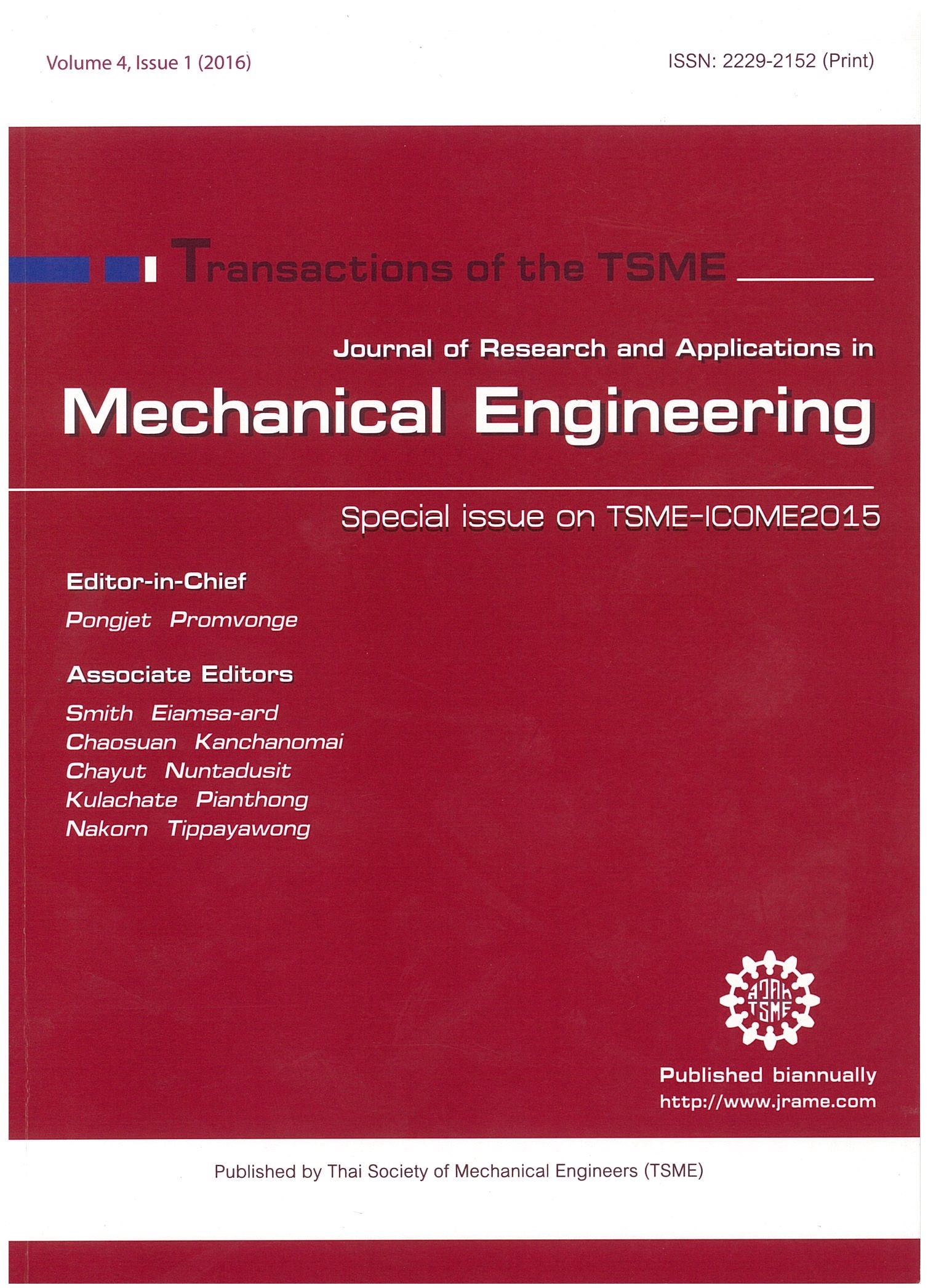Simulation of hydrocyclone circuit
Main Article Content
Abstract
A hydrocyclone is a widely used equipment for solid-liquid separation process. The form of multiple hydrocyclone units connected together into a circuit form is also commonly found if the specific separation performance cannot be achieved by using a single unit alone. In general, a hydrocyclone circuit is normally designed by mass balance principle. Though the method and its effectiveness of the mass balance method are rarely reported in literatures. This paper focuses on the development and clarification of such method. It is found that, while the hydrocyclone’s efficiency curve is assumed to be known, the required inputs for the calculation consist of volume flowrate, particle distribution, and fluid concentration. The calculation outputs are also these variables but for each hydrocyclone unit. The calculation results show that the developed method is able to predict the separation performance of the hydrocyclone circuit, especially if the fluid concentration at each stage is of interest, which is normally the case for actual industrial applications. The dependence between the fluid concentration and the volume flowrate also reflects the actual hydrocyclone circuit operation as the flow control valve is commonly used at different parts of the hydrocyclone circuit to adjust or control the circuit’s separation performance.
Article Details
This work is licensed under a Creative Commons Attribution-NonCommercial-ShareAlike 4.0 International License.
References
[2] Hwang, K.J., Hwang, Y.W. and Yoshida, H. Design of novel hydrocyclone for improving fine particle separation using computational fluid dynamics, Chemical Engineering Science, vol. 85, 2013, pp. 62-68.
[3] Williams, R.A. Design targeting of hydrocyclone networks, Minerals Engineering, Vol. 7, 1994, pp. 561-576.
[4] Aldrich, C. Hydrocyclones, Department of Mining Engineering and Metallurgical Engineering, Western Australian School of Mines, Curtin University of Technology, Perth, WA, Australia.
[5] Berthiaux, H. and Dodds, J. Modeling classifier networks by Markov chains, Powder Technology, Vol. 105, 1999, pp. 266-273.
[6] Chen, W., Zydek, N. and Parma, F. Evaluation of hydrocyclone models for practical applications, Chemical Engineering Journal, Vol. 80, 2000, pp. 295-303.
[7] Choong, G. and Chuah, F.l. Prediction of the effect of dimension, particle density, temperature, and inlet velocity on cyclone collection efficiency, Jurnal Teknology, Vol. 40, 2004, pp. 37-50.
[8] Enliang, L. and Yingmin. W. A new collection theory of cyclone separators, AIChE Journal, Vol. 35, 1989, pp. 666-669.
[9] Zhao, B. Development of a new method for evaluating cyclone efficiency, Chemical Engineering and Processing, Vol. 44, 2005, pp. 447-451.
[10] Amini, S., Mowla, D. and Golkar, M. Developing a new approach for evaluating a de-oiling hydrocyclone efficiency, Desalination, Vol. 285, 2012, pp. 131-137.
[11] Saengchan, K. Effects of Apex Diameter on the Tapioca Starch Separation Efficiency of the Hydrocyclone, Food Engineering, Faculty of Engineering, King Mongkut’s University of Technology Thonburi, 2005.



